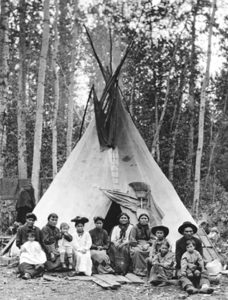Introduction
The Manitoba Treaty Land Entitlement Agreement details the way Canada, Manitoba and the Treaty Land Entitlement Committee (“TLEC”) of Manitoba Inc. have agreed to fulfill outstanding Treaty Land Entitlement (“TLE”) claims in Manitoba for Entitlement First Nations (“EFNs”) represented by the TLEC. The TLE Framework Agreement attempts to settle the land debt that is owed to the First Nations that did not receive all the lands that they were entitled to under Treaties 1, 3, 4, 5, 6 and 10.
History

In 1977, the Treaty Land Entitlement Committee of Manitoba Inc. was formed to begin negotiations on behalf of Manitoba First Nations to settle outstanding TLE’s with Canada.
It is important to note that the province of Manitoba was not involved in the negotiation of Treaties, or in the initial allocation of lands after the Treaties were signed. From the time Manitoba entered Confederation in 1870, the federal government retained control over unallocated Crown lands in the province, along with other natural resources. The Manitoba Natural Resources Transfer Agreement (MNRTA) of 1930, which formed part of the Constitution Act 1930, transferred control and administration of these resources and lands to Manitoba, but required the province to provide Canada with sufficient unoccupied Crown land to fulfill outstanding TLE obligations to Manitoba First Nations.
In 1983, Canada, Manitoba and the TLE Committee began negotiations. A draft agreement in principle, covering 23 First Nations, provided for 640,000 acres of land and about $40 million to be distributed to the affected First Nations. However, the three parties did not finalize the agreement.
In the early to mid-1990’s, individual TLE settlement agreements were finalized by seven Manitoba First Nations not represented by the TLE Committee. These are: Garden Hill, Red Sucker Lake, St. Theresa Point and Wasagamack First Nations (March 1994); the Long Plain First Nation (August 1994); the Swan Lake First Nation (March 1995); and the Roseau River First Nation (November 1995).
In October 1993, a protocol containing rules for negotiations was signed by the TLE Committee, Canada and Manitoba. At the time, the TLE Committee represented 22 First Nations, but only 19 had their TLE claims validated by Canada.
This protocol established a “bilateral” negotiation process. Canada and the TLE Committee would negotiate on matters relating to the Treaties and Manitoba and Canada would negotiate on matters relating to the Manitoba Natural Resources Transfer Act of 1930.
On June 21, 1996, an Agreement in Principle was signed by all parties outlining the main components of a Manitoba Treaty Land Entitlement Framework Agreement.
On May 29, 1997, the Manitoba Treaty Land Entitlement Framework Agreement was signed by the TLE Committee (representing 20 First Nations), Canada and Manitoba at the Opaskwayak Cree Nation, MB. This Framework Agreement is intended to fulfill Canada’s outstanding debt of lands owed to the 20 TLE Committee member First Nations.
TLEC’S Implementation Secretariat
As set out in Article 33.02, General Responsibilities of TLE Committee, of the Manitoba Framework Agreement (MFA) on Treaty Land Entitlement, the TLEC will assist with the implementation of the MFA and each Treaty Entitlement Agreement (“TEA”) signed by TLEC’s Member Entitlement First Nations (“EFNs”), by undertaking the following:
- To provide technical and professional support to an EFN in planning and conducting the Community Approval Process (CAP);
- To develop and deliver a communications program for the 21 EFN’s informing them about the implementation of the MFA;
- To provide professional and technical support to an EFN in explaining the provisions contained in the MFA and the Treaty Entitlement Agreement (TEA) and in the implementation of both agreements;
- To establish a working relationship with the departments and staff of Canada and Manitoba in support of the implementation of the MFA;
- To provide professional and technical support to an EFN in all aspects of the selection or acquisition of land to be set apart as “Reserve”, including:
a) Reviewing and commenting on the Land Selection Study undertaken by the EFN;
b) Liaison with Manitoba in the process of review of proposed Dispositions and Mineral Dispositions within each Community Interest Zone (CIZ);
c) Reviewing the application of the Principles to the selection or acquisition of land;
d) The preparation and negotiation of agreements necessary for the selection or acquisition of land;
e) The monitoring of the land transfer process;
f) The monitoring of the process of setting apart land as reserve;
g) The negotiation of municipal development and services agreements as required;
h) The removal, discharge or accommodation of Third Party Interests;
i) To provide professional and technical support to the Implementation Monitoring Committee (IMC) at meetings and aiding in resolving and mediating disputes amongst the major parties involved. - To produce documents and manuals in support of the implementation of the MFA; and,
- To produce reports on the progress of the implementation of the MFA and TEAs.

